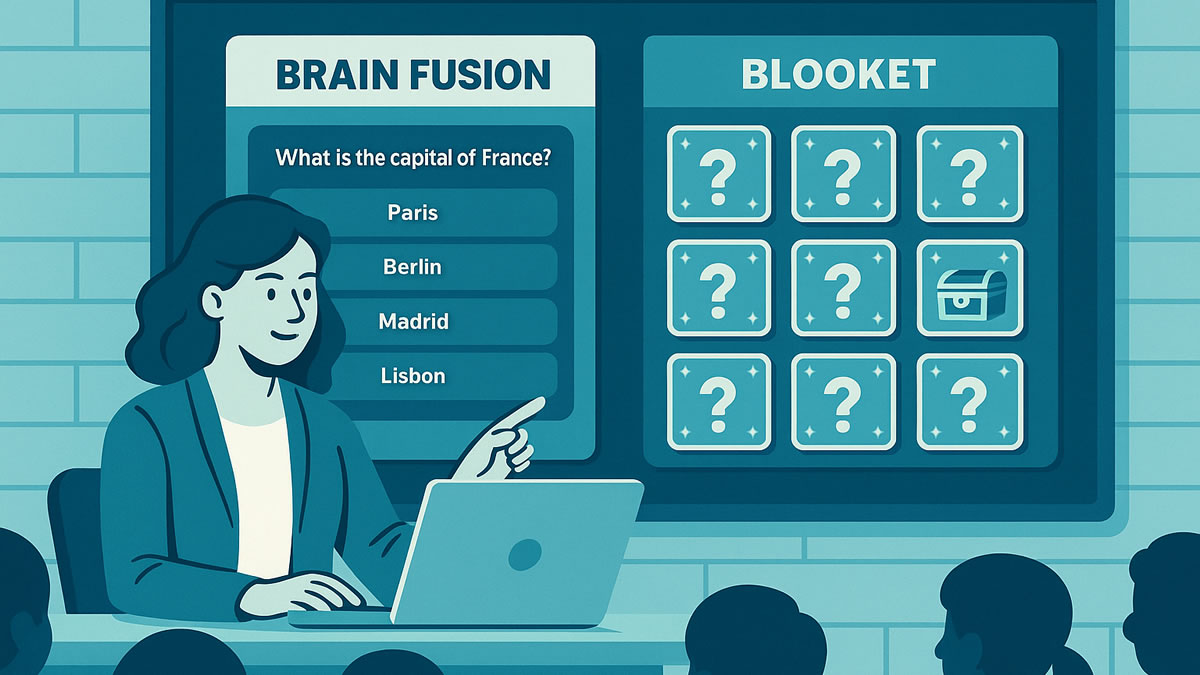Back-to-School 2025: Classroom Engagement Strategies Teachers Love
The first weeks of school set the tone for everything that follows. When students feel energized, connected, and supported early on, the entire semester becomes smoother—for instruction, for behavior, and for learning outcomes.
But Back-to-School 2025 brings new challenges too: AI expectations, post-pandemic attention spans, and classrooms that need more engagement than ever.
The good news? A few simple, research-backed strategies can make the first month of school your most successful yet.
This guide highlights practical, teacher-tested ways to boost engagement—plus how BrainFusion can help you turn any lesson into an instant game-based experience.
Why Engagement Matters More in 2025
Students entering classrooms today have grown up with personalization, instant feedback, and interactive digital experiences. Traditional “sit and get” instruction simply doesn’t compete.
Research from cognitive science reinforces this:
- Active learning improves retention far more than passive listening
- Retrieval practice strengthens long-term memory
- Immediate feedback accelerates mastery
- Choice and autonomy boost intrinsic motivation
Engagement isn’t about flashiness—it’s about creating a learning environment where the brain stays active.
1. Start With Short, Low-Stakes Wins
The first few days of school often include procedures, introductions, and syllabus overviews. But students learn best when they’re doing something right away.
Try this:
- 3-minute warm-up questions
- A quick poll or classroom prediction
- A “get to know you” challenge using game-based learning
- A 5-question content pre-check that informs tomorrow’s lesson
These mini-wins set the expectation that every class begins with meaningful action.
Teaching Tip
Use BrainFusion to turn your first-week questions into a quick warm-up game. Students join with a simple code—no accounts needed.
2. Build Community Through Collaboration Games
Students engage more deeply when they feel connected to their peers. Early collaborative games foster trust, reduce anxiety, and boost motivation.
Ideas you can use immediately:
- Team Trivia: Subjects can be academic or fun facts
- Gallery Walk Challenges: Groups solve posted problems around the room
- Scavenger Hunts: Academic, classroom-procedure-based, or icebreaker themed
- Team Puzzle Games: Great for building non-academic confidence early
To maximize learning, rotate mixed-ability teams and include structured reflection questions.
3. Introduce Retrieval Practice Early (and Keep It Soft)
Students often associate “review” with test stress. In the first month, aim for low-pressure retrieval:
- Short quizzes
- Think-pair-share checks
- Game-based activities
- Flashcard rounds
- Exit tickets
These approaches strengthen memory pathways without overwhelming learners.
And when paired with instant feedback, retrieval practice becomes one of the most effective strategies for improving long-term retention.
4. Use Variety—It’s the Antidote to August Fatigue
New school year energy fades quickly. By week two or three, novelty drops, and routines feel predictable.
Build in gentle variety:
- Rotate between visual, verbal, and movement-based tasks
- Mix individual work with partner and team formats
- Incorporate at least two new activity formats in August
- Use multiple game modes to keep content fresh without rebuilding lessons
BrainFusion’s multi-mode system (Quiz Quest → Artifact Adventure → Ninja Fruit Frenzy → Flashcard Fusion) works especially well here: one question set, many ways to play.
5. Turn Your Syllabus, Notes, or Standards Into an Interactive Game
If you want students to remember key expectations, vocabulary, or learning goals, gamify them.
For example, you can turn:
- Class rules → classroom scenario quiz
- Syllabus → team challenge game
- Unit overview → predictive “What do you already know?” round
- Standards → teacher-designed quick check
BrainFusion makes this easy with instant AI-powered generation. Paste your text, choose a mode, and launch—prep time stays low during the busiest month of the year.
6. Use Analytics to Guide Your First Month of Instruction
Back-to-school weeks are full of information-gathering opportunities. Use question-level analytics to answer:
- What prior knowledge gaps do students have?
- Which misconceptions appear across multiple students?
- What topics need reteaching before the first unit test?
Game-based assessment gives you this data without test anxiety or long grading hours.
Example: First-Week Engagement Plan
Day 1: Warm-up game + community-building challenge
Day 2: Low-stakes retrieval check (BrainFusion or whiteboards)
Day 3: Collaborative problem-solving + reflection
Day 4: Mini lesson + quick analytics-driven quiz
Day 5: Spiral review game mixing content from the whole week
This structure keeps students active, builds confidence, and gives you strong early data.
Final Thoughts
Back-to-School 2025 doesn’t have to be overwhelming. With the right blend of engagement, retrieval practice, community, and variety, you’ll set up your class for a successful year.
And when you want fast, flexible, evidence-driven activities, BrainFusion can turn any content into a fun, multiplayer learning experience in minutes.
Try BrainFusion This Week
Turn your first-week content into a classroom-ready game in under a minute. Simple join codes. Instant analytics.





